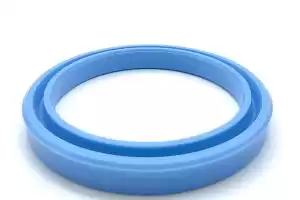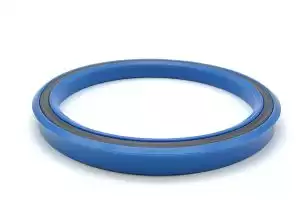O-rings have excellent sealing performance, can solve the sealing needs of different industries, and play an important role. The following article will help you to understand the manufacturing process of O-rings and help you better understand O-rings so as to provide your O-rings. Make the wisest choice for your ring application.

1、Mold design
Design and develop a suitable mold according to the size and shape of the sealing equipment, and process and design the mold. Usually, the mold development time is about 2-5 days. If there are special requirements for the mold, it may take more time.
2、Materials prepare
O-rings are usually made of rubber, polyurethane, polytetrafluoroethylene, and other materials. Because different materials have different characteristics, you need to prepare the correct material according to your application environment. For special applications, unique formula ingredients can be developed to meet it. Special sealing requirements. The right material is a critical factor in determining O-ring sealing performance.
(TYS team has professional German and Taiwanese chemical experts and in-house engineers who specialize in material coordination and have the ability to provide customized solutions for customers’ different application requirements, whether it is O-rings or hydraulic seals, especially in the field of hydraulic seals. It has strong technical and price advantages. If you want to know more about TYS hydraulic seal products, you can go to the product page to get them, or if you have any needs, you can contact the TYS team to answer your questions.)
3、Pressing or vulcanization molding
The material formula adjusted according to the proportion is put into the mold and pressed into shape. During the molding process, the temperature and pressure need to be controlled to ensure the quality of the O-ring. Of course, the O-ring can also be vulcanized and formed through different production processes such as vulcanization molding, adjusting the mold temperature, controlling the molding time, mold clamping force, hydraulic pressure, etc. Different performance requirements and cost control require different production processes.
4、Surface treatment
After the O-ring is formed, there may be some burrs or unevenness on the surface, and surface processing, such as trimming, is required to ensure the sealing effect and the appearance of the O-ring.
5、Quality inspection
Each O-ring that is manufactured requires a professional quality inspection department to conduct a comprehensive inspection of its quality and performance. The inspection content includes appearance, size, hardness, oil resistance, temperature resistance, aging resistance, and corrosion resistance. For performance tests such as tensile strength, compression permanent deformation, and elongation at break, the test results must meet the parameter range standards to become a qualified O-ring.
(The three factories of TYS each have their internal laboratories, with 26 sets of various professional testing equipment. All the testing mentioned above equipments are available to ensure that the quality of products coming out of TYS is reliable and stable.)
6、Packaging and shipping
The O-rings are packaged and shipped to various places around the world by the shipping team according to customer needs.
The above is a detailed introduction to the basic steps of the O-ring processing and manufacturing process. I hope it will be helpful to you!







